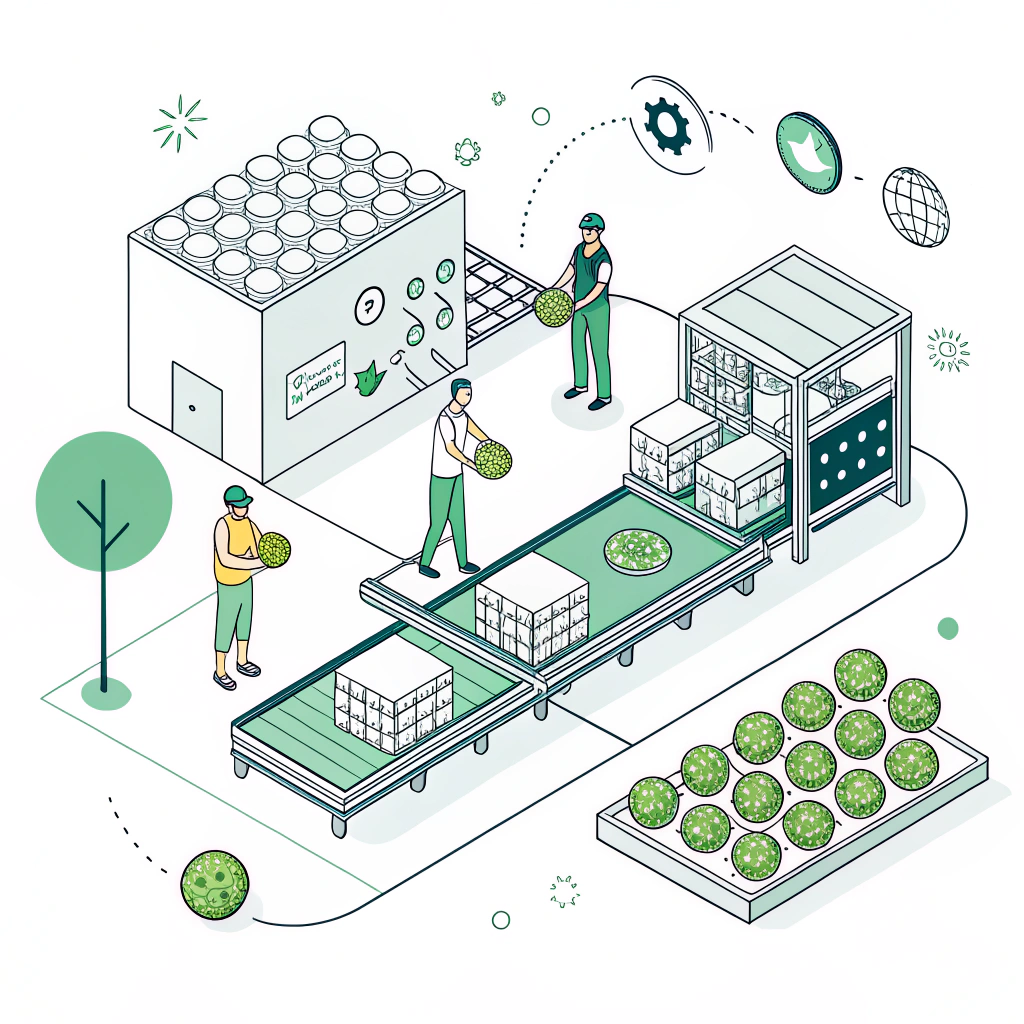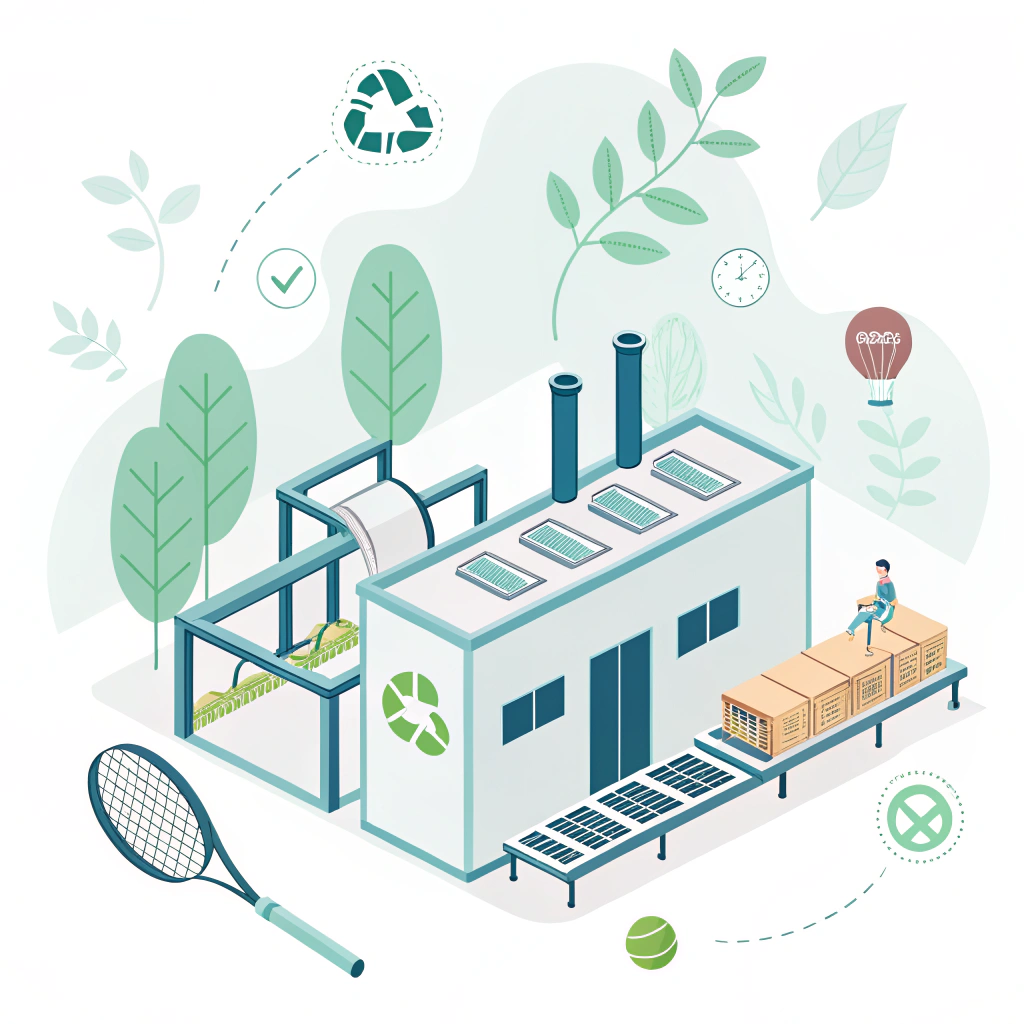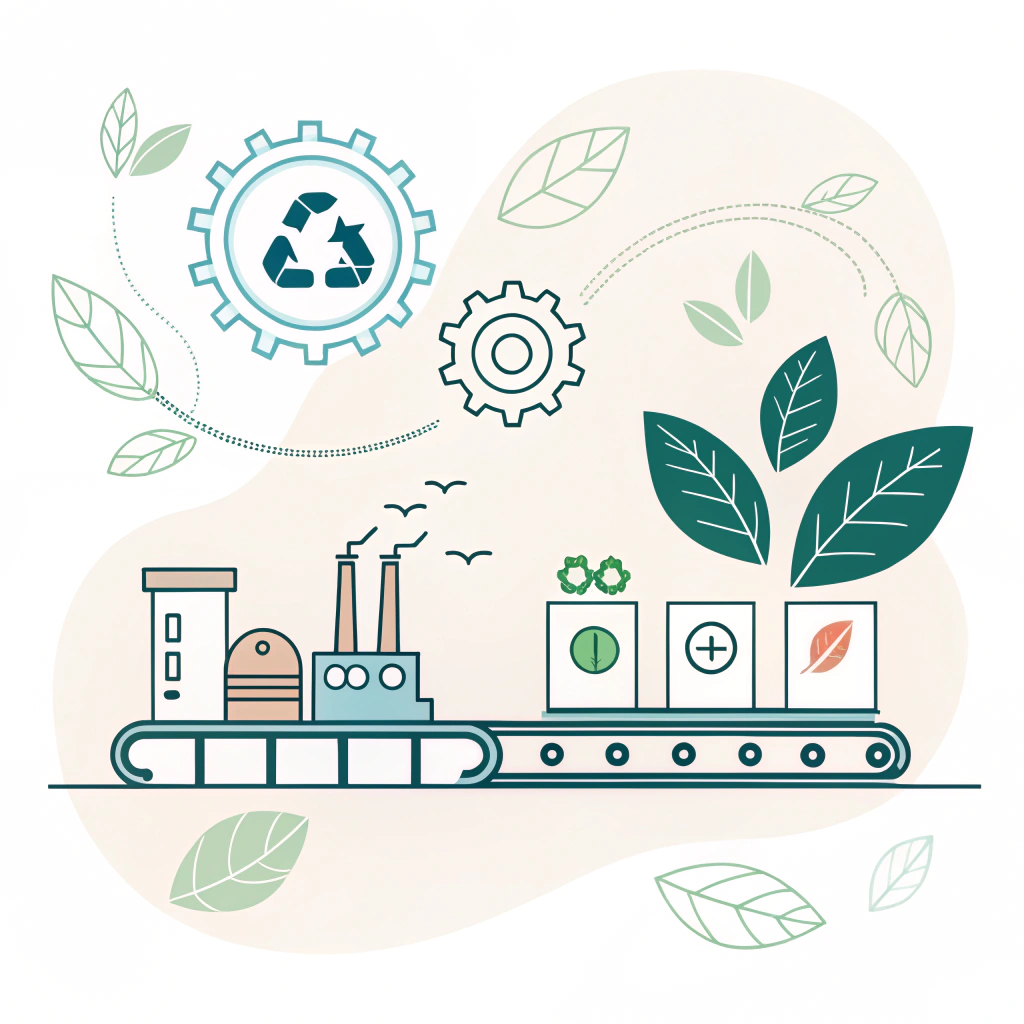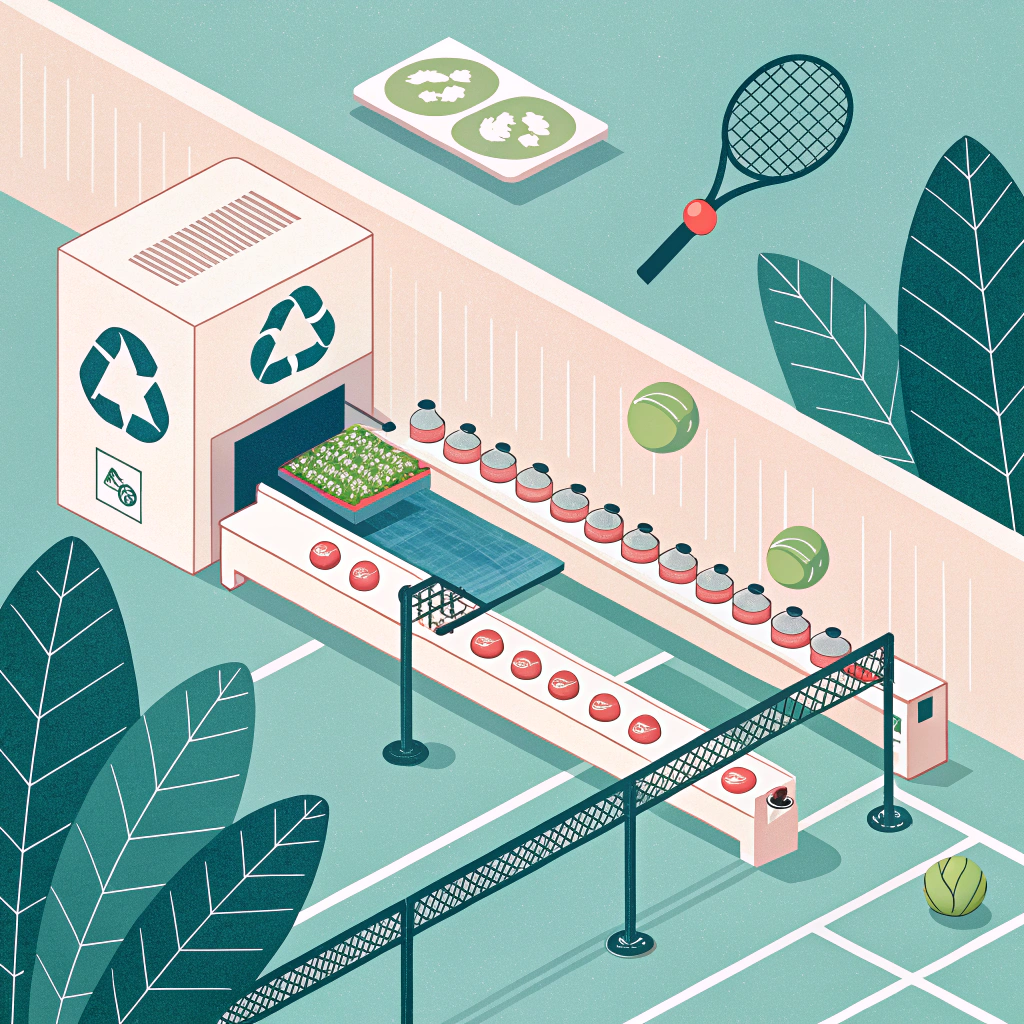Rapid Answer: Eco-friendly manufacturing methods for pickleball paddles not only meet stringent environmental standards but also deliver high performance. By integrating sustainable materials and energy-efficient processes, manufacturers can achieve a reduced carbon footprint while maintaining board-level precision and durability.
In the dynamic world of sports equipment manufacturing, companies face the dual challenge of delivering high-performance products and meeting rigorous environmental standards. For senior procurement managers and product development specialists, the decision between traditional and eco-friendly production methods is especially complex. This article delves into the sustainability benefits and technical merits of incorporating green production processes into pickleball paddle manufacturing, comparing conventional methods with innovative, eco-friendly alternatives. By examining cutting-edge techniques and renewable material options, we aim to provide a comprehensive, fact-based guide to help you make well-informed procurement decisions.
Pickleball paddle production hinges on several core manufacturing processes that shape the paddle's performance, durability, and environmental impact. The three primary techniques include:
Hot pressing involves heating materials and applying pressure to consolidate them into a durable, integrated structure.
-
Advantages:
- High production efficiency makes it suitable for large-scale manufacturing.
- Produces paddles with impressive impact resistance.
- Ensures structural integrity for high-performance play.
-
Disadvantages:
- The heat may alter material properties, potentially affecting the nuanced feel required by professional players.
- Significant capital investment is required in high-tech equipment.
Cold pressing uses mechanical pressure at room temperature to shape paddle materials.
-
Advantages:
- Enables precision control over paddle thickness and structure, maintaining the intrinsic properties of materials.
- Results in excellent ball feel and responsiveness, ideal for players requiring fine control.
-
Disadvantages:
- Longer production cycles can reduce overall efficiency.
- Demands high-quality, precise equipment for consistent results.
Thermoforming, which involves heating materials to their softening point and molding them into intricate shapes, allows for the creation of customized designs.
-
Advantages:
- Supports complex designs with precise material distribution, improving paddle stability.
- Enhances performance through tailored structural features.
-
Disadvantages:
- Longer production times may increase manufacturing costs, making it best suited for premium or custom-made paddles.
Each of these methods offers unique benefits and limitations. For businesses aiming to integrate eco-friendly practices, the question becomes: How do traditional production processes compare with green production methods in terms of sustainability and performance?
Eco-friendly manufacturing is more than a buzzword – it represents a shift towards sustainable sourcing, energy-efficient processes, and reduced environmental impact. In this section, we contrast conventional manufacturing with eco-innovation by focusing on two critical factors: environmental compliance and production efficiency.
Below is a comparative table that outlines the key differences between traditional and eco-friendly manufacturing practices in the context of pickleball paddle production:
| Factor | Traditional Manufacturing | Eco-Friendly Manufacturing |
|---|---|---|
| Materials Sourcing | Relies on conventional materials like standard polymers and composites | Focuses on renewable, recycled, and eco-certified materials |
| Energy Consumption | Typically energy-intensive due to high-temperature processes, e.g., hot pressing | Utilizes energy-efficient processes such as improved cold pressing and optimized thermoforming |
| Environmental Impact | Higher carbon footprint; potential hazardous waste generation | Lower emissions and minimal waste production through sustainable practices |
| Production Efficiency | Well-established, high throughput but less adaptable to niche sustainability goals | Balanced with innovation; may incur longer cycles initially but improves process over time |
| Cost Factors | Economies of scale reduce costs but may incur hidden environmental externalities | Investment in green technology can raise initial costs but results in long-term sustainability savings |
| Performance Consistency | Proven track record in consistency and durability | Emerging technologies offer comparable or superior performance with a reduced ecological footprint |
For senior procurement managers, the table provides a clear overview of where investments in green production yield both environmental and market-facing benefits.
Environmental compliance is no longer optional. With stringent guidelines from governing bodies worldwide, including those related to renewable energy use and carbon emissions, green manufacturing practices have become essential. Eco-friendly methods focus on:
- Sustainable Sourcing: Using materials such as recycled composites and renewable fibers reduces dependence on petrochemicals and ensures compliance with environmental regulations.
- Reduced Carbon Footprint: Lower energy consumption processes and waste-minimizing techniques contribute substantially to the overall reduction of greenhouse gas emissions.
- Energy Efficiency: By optimizing production processes (for instance, enhancing the precision of cold pressing or thermoforming), manufacturers achieve remarkable gains in process efficiency while lowering energy costs.
For decision-makers evaluating potential suppliers, these sustainability benefits complement performance metrics, making eco-friendly suppliers especially attractive in today’s environmentally conscious market.
Adopting eco-friendly production in pickleball paddle manufacturing requires a strategic approach. Let’s break down the key components that make up a sustainable paddle and the eco-innovations that are driving this industry forward.
Traditional paddles often rely on premium Carbon Fiber3 variants like 3K, 12K, or T300. However, the production of these materials can be energy-intensive. Eco-friendly alternatives include recycled carbon fiber and hybrid composites that blend recycled materials with traditional fibers, providing a balance between performance and sustainability.
- Recycled Carbon Fiber4: This process involves recovering carbon fiber from end-of-life products and reprocessing it to create new paddles. Although the tensile strength may vary compared to virgin carbon fiber, advances in technology continue to close the gap.
- Composite Innovations: Combinations such as carbon fiber and fiberglass composites offer excellent durability and control. When recycled materials are incorporated, the resulting paddle not only delivers on performance but also reduces material waste significantly.
In addition to recycled fibers, manufacturers are exploring renewable materials like bamboo cores and honeycomb cores5 made from sustainable polymers. Bamboo, a rapidly renewable resource, provides excellent impact resistance while enhancing the eco-credentials of the final product. Moreover, sustainable honeycomb cores contribute to significant weight reduction and improved vibration damping, making them ideal for professional play.
Cold pressing, already recognized for its precision, offers substantial eco-friendly advantages. Since it operates at ambient temperature, the energy footprint is dramatically reduced. Furthermore, cold pressing maintains the inherent properties of eco-friendly materials, ensuring that high performance is not sacrificed for sustainability. Manufacturers can upgrade their equipment to maximize efficiency, thus bridging the gap between green production and traditional precision.
Thermoforming, while energy-intensive in its traditional form, can be re-engineered using energy-efficient molds and precise temperature controls. By optimizing the heating phase and reducing cycle times, eco-friendly thermoforming processes reduce overall energy consumption. This method not only supports complex paddle designs but also ensures that vulnerable natural materials are not overexposed to prolong heating cycles.
Quality control is vital when integrating eco-friendly methods. With NEX Pickleball as a case study, every paddle undergoes rigorous testing to assess not just its performance standards but also its environmental impact. Incorporating sensors and real-time analytics into production lines helps monitor energy usage, material waste, and production efficiency. These data-driven insights allow for continuous improvement and alignment with global sustainability benchmarks.
-
Enhanced Market Appeal: With increasing consumer awareness of sustainability, eco-friendly paddles resonate well with a growing market of environmentally conscious players.
-
Long-term Cost Savings: Although green production methods might require an upfront investment, the reduced energy costs and waste management expenses yield long-term financial benefits.
-
Regulatory Alignment: Adhering to environmental regulations minimizes the risks of compliance issues and potential penalties, positioning companies as leaders in sustainable manufacturing practices.
-
Innovation and Performance: Continuous improvements in eco-friendly methods have demonstrated that green production can match or even surpass traditional manufacturing in terms of paddle performance. Innovations such as recycled composites and renewable core materials are setting new industry standards.
NEX Pickleball stands at the forefront of sustainable innovation in sports equipment production. Transitioning from conventional methods to eco-friendly processes, NEX Pickleball has managed to blend the high-performance requirements of competitive pickleball with forward-thinking environmental practices.
- Material Upgrading: The company integrated recycled carbon fiber and alternative composites into its production line. Rigorous testing ensured these materials met both performance and durability standards.
- Process Optimization: By adopting enhanced cold pressing and optimizing thermoforming cycles, NEX Pickleball reduced its energy consumption without compromising paddle quality.
- Sustainability Certification: In addition to internal quality controls, NEX Pickleball pursued external certifications to validate its eco-friendly standards, boosting customer confidence in its green manufacturing claims.
- A notable reduction in carbon emissions due to energy-efficient production cycles.
- Increased consumer trust among environmentally conscious professionals.
- A competitive edge in the marketplace as regulatory bodies increasingly factor sustainability into supplier evaluations.
Green production in pickleball paddle manufacturing is more than a trend; it is a necessary evolution in the face of global environmental challenges and evolving market dynamics. The integration of eco-friendly materials and energy-efficient processes offers a dual benefit: achieving exceptional, high-performance products while reducing ecological impact.
For procurement managers and product development specialists, the decision to partner with eco-friendly manufacturers like NEX Pickleball means aligning with global sustainability trends and regulatory standards. It also opens opportunities to differentiate products in a competitive market, delivering both performance and responsibility.
Action Recommendations:
- Evaluate your current supplier network for opportunities to integrate recycled and renewable materials.
- Consider equipment upgrades that favor energy-efficient manufacturing processes such as optimized cold pressing.
- Engage with suppliers who not only meet technical specifications but also uphold clear sustainability standards.
- Request detailed production process comparisons and sustainability certifications from potential suppliers.
- Leverage eco-friendly distinguishing features as part of your market strategy, appealing to a growing segment of eco-conscious consumers.
As the sports equipment industry evolves, adopting sustainable practices becomes a strategic priority. Companies that prioritize eco-innovation are well-positioned to benefit from regulatory incentives, cost efficiencies, and enhanced brand reputation. The journey towards a greener supply chain is complex, but with careful planning and commitment, it brings tangible benefits for both the environment and business outcomes.
People Also Ask
-
What are the benefits of using eco-friendly manufacturing processes in sports equipment production?
Eco-friendly manufacturing processes reduce energy consumption, lower a product's carbon footprint, and minimize waste. These practices also enhance sustainability credentials and market appeal while meeting stringent regulatory standards. -
How does cold pressing contribute to an eco-friendly production process?
Cold pressing operates at room temperature, which significantly reduces energy consumption compared to high-temperature methods. It allows for precise control over material properties, ensuring both high performance and environmental efficiency. -
Can recycled composites match traditional performance in pickleball paddles?
Recent advancements in recycled composites have shown that they can offer competitive performance levels compared to traditional materials. When properly engineered, recycled composites maintain durability and responsiveness, making them a viable option in eco-friendly paddle production.
-
Cold Pressing: Click to explore how cold pressing techniques deliver precision and sustainability in manufacturing processes. ↩ ↩
-
Thermoforming: Click to understand the thermoforming process, its applications, and its advantages in producing complex, customized designs. ↩ ↩
-
Carbon Fiber: Click to read an article detailing the properties, manufacturing processes, and performance benefits of carbon fiber in high-tech sports equipment. ↩ ↩
-
Recycled Carbon Fiber: Click to discover the advancements in recycled carbon fiber technology and its benefits for sustainable manufacturing. ↩ ↩
-
Honeycomb Cores: Click to learn about honeycomb core structures, their role in reducing weight, and enhancing vibration damping in sports gear. ↩ ↩







